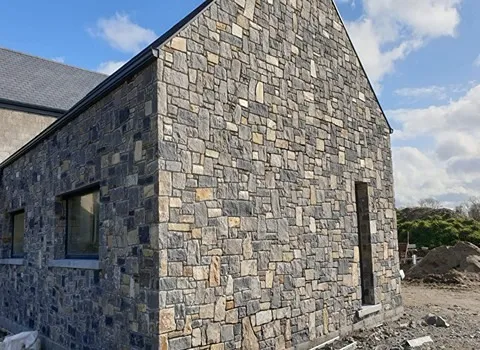Durable, versatile, and undeniably elegant, limestone has been used for centuries in the construction of some of the world's most iconic buildings.

The Timeless Allure of Limestone Building Stone
In this comprehensive guide, we will delve into the world of limestone building stone, exploring its characteristics, benefits, uses, and maintenance requirements.Whether you are a homeowner embarking on a renovation project or a professional architect looking for the perfect material for your next design, this article will equip you with all the essential knowledge you need to harness the beauty and longevity of limestone building stone.
Limestone is a sedimentary rock composed predominantly of calcite and aragonite minerals, making it a popular choice for building applications due to its durability and natural beauty.
Its unique formation process, which involves the accumulation of marine organisms such as coral and mollusks over millions of years, gives limestone its distinctive texture and color variations.
From the creamy whites of Indiana limestone to the warm golden hues of French limestone, there is a wide range of options to choose from, each with its own aesthetic appeal.
One of the key attractions of limestone building stone is its versatility.
It can be carved, sculpted, and shaped into a variety of architectural elements, ranging from intricate columns and balustrades to sleek flooring and cladding.
Its soft, workable nature allows for intricate detailing and precise craftsmanship, making it a favorite material for ornate designs and historical restorations.
Whether you are aiming for a classic, traditional look or a contemporary, minimalist aesthetic, limestone building stone offers endless possibilities for creative expression.

The Benefits of Limestone Building Stone
Aside from its aesthetic appeal, limestone building stone offers a range of practical benefits that make it a smart choice for construction projects of all scales.
One of the most notable advantages of limestone is its durability.
Thanks to its dense composition and resistance to wear and tear, limestone is an excellent choice for high-traffic areas such as floors, patios, and walkways.
Its ability to withstand harsh weather conditions, including freeze-thaw cycles, makes it an ideal material for exterior facades and landscaping features.
In addition to its durability, limestone building stone is also known for its thermal properties.
Limestone has a natural ability to regulate temperature, keeping interiors cool in hot climates and warm in cold conditions.
This energy-efficient quality can help reduce heating and cooling costs, making limestone an environmentally friendly choice for sustainable building projects.
Furthermore, limestone is a natural, non-toxic material that does not emit harmful VOCs (volatile organic compounds), ensuring a healthy indoor environment for occupants.

The Versatile Uses of Limestone Building Stone
Limestone building stone can be used in a wide range of architectural applications, both indoors and outdoors, due to its adaptability and aesthetic appeal.
In interior spaces, limestone is often utilized for flooring, countertops, and wall cladding, adding a touch of luxury and sophistication to residential and commercial settings alike.
Its warm, earthy tones create a sense of warmth and serenity, making it a popular choice for creating inviting living spaces and elegant dining areas.
On the exterior, limestone building stone shines as a versatile material for facades, landscaping features, and structural elements.
Whether used as a grand entrance with towering columns or as a subtle accent with decorative moldings, limestone adds a sense of grandeur and timelessness to any architectural design.
Its ability to be carved into intricate patterns and motifs allows for endless customization options, enabling architects and designers to create bespoke elements that enhance the overall aesthetics of a building.

Maintaining the Beauty of Limestone Building Stone
While limestone building stone is renowned for its durability and longevity, proper maintenance is essential to ensure its beauty and structural integrity over time.
Regular cleaning and sealing are key steps in preserving the appearance of limestone surfaces, especially in high-traffic areas prone to spills and stains.
Using a mild detergent and a soft brush or cloth, gently remove dirt and debris from the surface of the stone to prevent discoloration and deterioration.
For outdoor applications, such as limestone facades and landscaping features, it is important to periodically inspect the stone for signs of weathering and damage.
Cracks, chips, and efflorescence (white salt deposits) should be addressed promptly to prevent further deterioration and maintain the structural stability of the stone.
In areas with severe weather conditions, such as coastal regions or areas with high levels of air pollution, more frequent maintenance may be required to protect the integrity of the limestone building stone.

